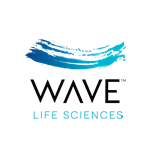Wave Life Sciences to Develop Programs in Rare, Genetic Eye Diseases
Research will focus on inherited retinal diseases associated with RHO, USH2A, ABCA4 and CEP290
Initial development candidate expected in H2 2019
“We have long believed that oligonucleotides have the potential to be particularly effective and durable in the eye and are energized by our latest research that provides additional validation of our precisely designed stereopure oligonucleotides,” said
Wave’s decision to expand its therapeutic pipeline into ophthalmology is supported by its data presented at the 14th Annual Meeting of the
Inherited retinal dystrophies are a wide range of heterogeneous, rare eye disorders characterized by progressive loss of vision and/or eventual blindness caused by inherited genetic mutations. These conditions affect approximately 200,000 people in the U.S. There are currently no cures or treatments for this category of diseases, except for one approved disease-modifying therapeutic in the U.S. for patients with biallelic RPE65 mutation-associated retinal dystrophy.
Wave’s research will assess four genetic targets, RHO P23H, USH2A, ABCA4 and CEP290 to address four rare, inherited retinal diseases. The company estimates that approximately 10,000 U.S. patients could potentially be treated by Wave’s approach to addressing these four diseases:
| Inherited Retinal Disease | Target |
| Retinitis pigmentosa due to a P23H mutation in the RHO gene impacts how the retina responds to light. Initial symptoms in early to late childhood include problems with night vision with blind spots developing in the peripheral vision over time. These blind spots converge to produce tunnel vision as the disease continues to progress, causing many patients to become legally blind in adulthood. | RHO P23H |
| Usher syndrome type 2A is characterized by hearing loss, starting at birth, followed by progressive vision loss beginning in adolescence or adulthood with problems with night vision and later peripheral blind spots. It is caused by a mutation in the USH2A gene. | USH2A |
| Stargardt disease, caused by a mutation in the ABCA4 gene, is characterized by progressive build-up of fatty yellow pigment (lipofuscin) in the cells underlying the macula. Over time, this accumulation damages the cells that are responsible for clear central vision, causing blurry sight, difficulty with night vision or impaired color vision in some patients. | ABCA4 |
| Leber congenital amaurosis 10 is caused by autosomal recessive mutations in the CEP290 gene, which encodes a protein required for the survival and proper function of photoreceptor cells. Affected infants are often blind at birth. Other symptoms may include crossed eyes; rapid, involuntary eye movements; unusual sensitivity to light; clouding of the lenses of the eyes; and/or a cone shape to the front of the eye. | CEP290 |
About Wave Life Sciences
Forward-Looking Statements
This press release contains forward-looking statements within the meaning of the Private Securities Litigation Reform Act of 1995, as amended, including, without limitation, the identity of the first four inherited retinal diseases and the first four targets that Wave expects to focus on; the expected timing of Wave’s initial ophthalmology development candidate; the belief that Wave’s stereopure oligonucleotides are particularly well-suited to address inherited retinal diseases; the belief that Wave’s recent ophthalmology data disclosed at
Investor Contact:
781-686-9600
gmorrell@wavelifesci.com
Media Contact:
José Juves
617-949-4708
jjuves@wavelifesci.com
Patient Contact:
617-949-2898
werler@wavelifesci.com
Source: Wave Life Sciences

